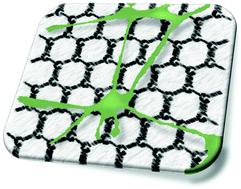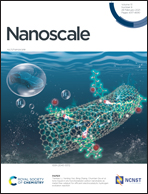Graphene glial-interfaces: challenges and perspectives†
Abstract
Graphene nanosheets are mechanically strong but flexible, electrically conductive and bio-compatible. Thus, due to these unique properties, they are being intensively studied as materials for the next generation of neural interfaces. Most of the literature focused on optimizing the interface between these materials and neurons. However, one of the most common causes of implant failure is the adverse inflammatory reaction of glial cells. These cells are not, as previously considered, just passive and supportive cells, but play a crucial role in the physiology and pathology of the nervous system, and in the interaction with implanted electrodes. Besides providing structural support to neurons, glia are responsible for the modulation of synaptic transmission and control of central and peripheral homeostasis. Accordingly, knowledge on the interaction between glia and biomaterials is essential to develop new implant-based therapies for the treatment of neurological disorders, such as epilepsy, brain tumours, and Alzheimer's and Parkinson's disease. This work provides an overview of the emerging literature on the interaction of graphene-based materials with glial cells, together with a complete description of the different types of glial cells and problems associated with them. We believe that this description will be important for researchers working in materials science and nanotechnology to develop new active materials to interface, measure and stimulate these cells.

- This article is part of the themed collections: Recent Review Articles and Chemistry of 2D materials: graphene and beyond


 Please wait while we load your content...
Please wait while we load your content...